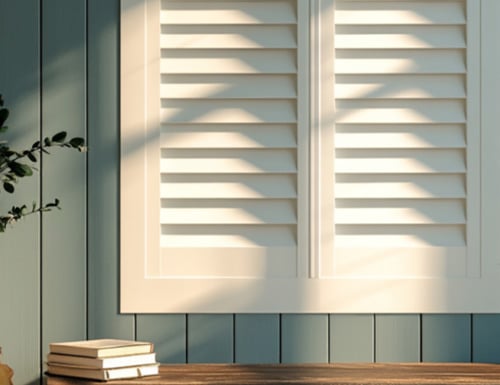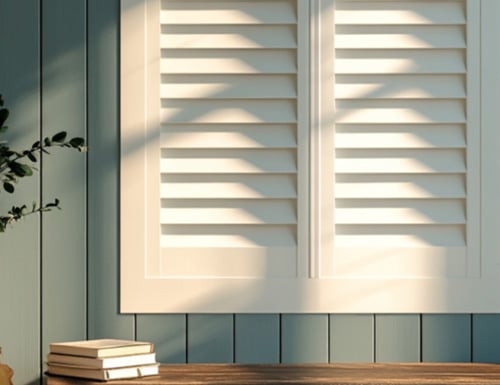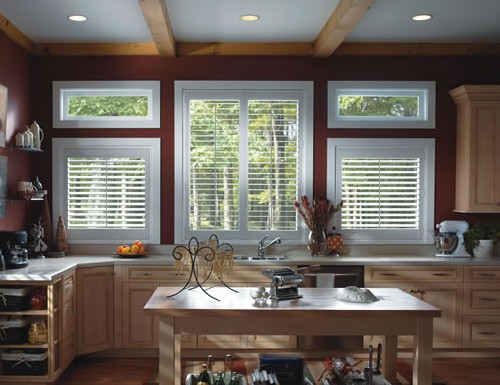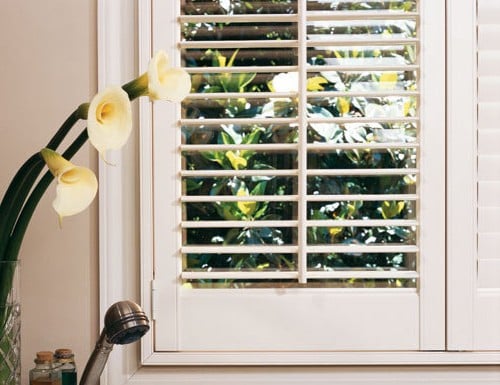Lexi Westingate | Blinds Chalet Design Team
Updated: Oct 3 2024

Composite shutters are a great option for window treatments, combining the beauty of real wood with the durability of moisture resistance and low maintenance. While installing these shutters is a project many homeowners can tackle themselves, it's important to follow the correct steps to ensure a secure fit and a professional finish. Below, we've outlined everything you need to know—from preparation and measuring to installation and final adjustments.
1. Preparation: Gather Your Tools and Materials
Before you start, make sure you have all the tools and materials ready. Being prepared will save you time and help you avoid common issues during installation.
Tools You’ll Need:
- Measuring tape
- Pencil or chalk for marking
- Level
- Power drill with drill bits
- Screwdriver (Phillips and flathead)
- Step ladder
- Hammer (for wall anchors, if needed)
- Composite shutters (cut to fit your windows)
- Frame pieces (e.g., L-frame, Z-frame)
- Screws and wall anchors (for drywall)
- Shims (for leveling, if necessary)
- Wood filler or caulk (optional for filling small gaps)
2. Measure Your Windows for a Perfect Fit
Accurate measurements are critical to making sure your shutters fit correctly, whether you're installing them inside or outside the window frame.
Inside Mount:
- Measure the window opening’s width at the top, middle, and bottom. Use the narrowest measurement to ensure a snug fit.
- Measure the height of the window from the top to the sill at the left, center, and right, and use the shortest measurement.
- Ensure your window depth meets the requirements for your chosen frame type.
- Measure the width of the window, adding 3 to 4 inches to each side for full frame coverage.
- Measure the height from the top of the window to the desired length, typically extending just below the sill.
3. Assemble and Prepare the Frame
The shutter frame forms the foundation of your installation. Correct assembly and alignment are key to a successful outcome.
Steps for Assembly:
- Lay the frame pieces on a flat surface and align them as they’ll sit around the window.
- Connect the pieces using the screws or connectors provided, ensuring the frame is square.
- Check the alignment with a level before continuing.
- Place the assembled frame into the window opening to check the fit. Use shims if needed and mark its position with a pencil.
4. Install the Shutter Frame
Once the frame is ready, it’s time to secure it to the window or wall.
Inside Mount:
- Drill pilot holes through the frame and into the window casing.
- Secure the frame with screws, starting at the top and working your way down. Ensure the frame stays level as you tighten the screws.
- Use shims to adjust the alignment if needed.
- Hold the frame in place, centering it over the window opening. Mark the screw positions on the wall.
- Drill pilot holes, insert wall anchors if necessary, and attach the frame with screws.
5. Attach the Shutter Panels
With the frame installed, you’re ready to attach the shutter panels.
- Align the panels with the pre-installed hinges on the frame.
- Use the screws provided to secure the panels, being careful not to overtighten.
- Test the operation by opening and closing the panels to ensure they move smoothly.
6. Final Adjustments and Touch-Ups
After installation, make any final adjustments and touch up for a polished result.
- Hinge Adjustments: Adjust the hinges if the panels aren’t aligning or moving smoothly.
- Fill Gaps: Use wood filler or caulk to seal small gaps between the frame and the wall.
- Touch-Up Paint: Apply paint or stain to cover any scratches for a seamless appearance.
7. Additional Tips for Success
- Take Your Time: Rushing can lead to mistakes, so move carefully through each step.
- Use the Right Tools: Make sure you have the proper tools for an easier and more accurate installation.
- Follow Manufacturer Instructions: Each shutter system is different, so always follow the guidelines provided with your product.
- Get Help if Needed: If you’re unsure about any step, don’t hesitate to seek help from a professional installer.
Conclusion: Installing Composite Shutters for a Flawless Finish
Installing composite shutters is a manageable DIY project that can enhance both the look and function of your windows. By following these steps and taking the time to measure and adjust everything carefully, you can achieve a polished and professional installation that will last for years to come.












